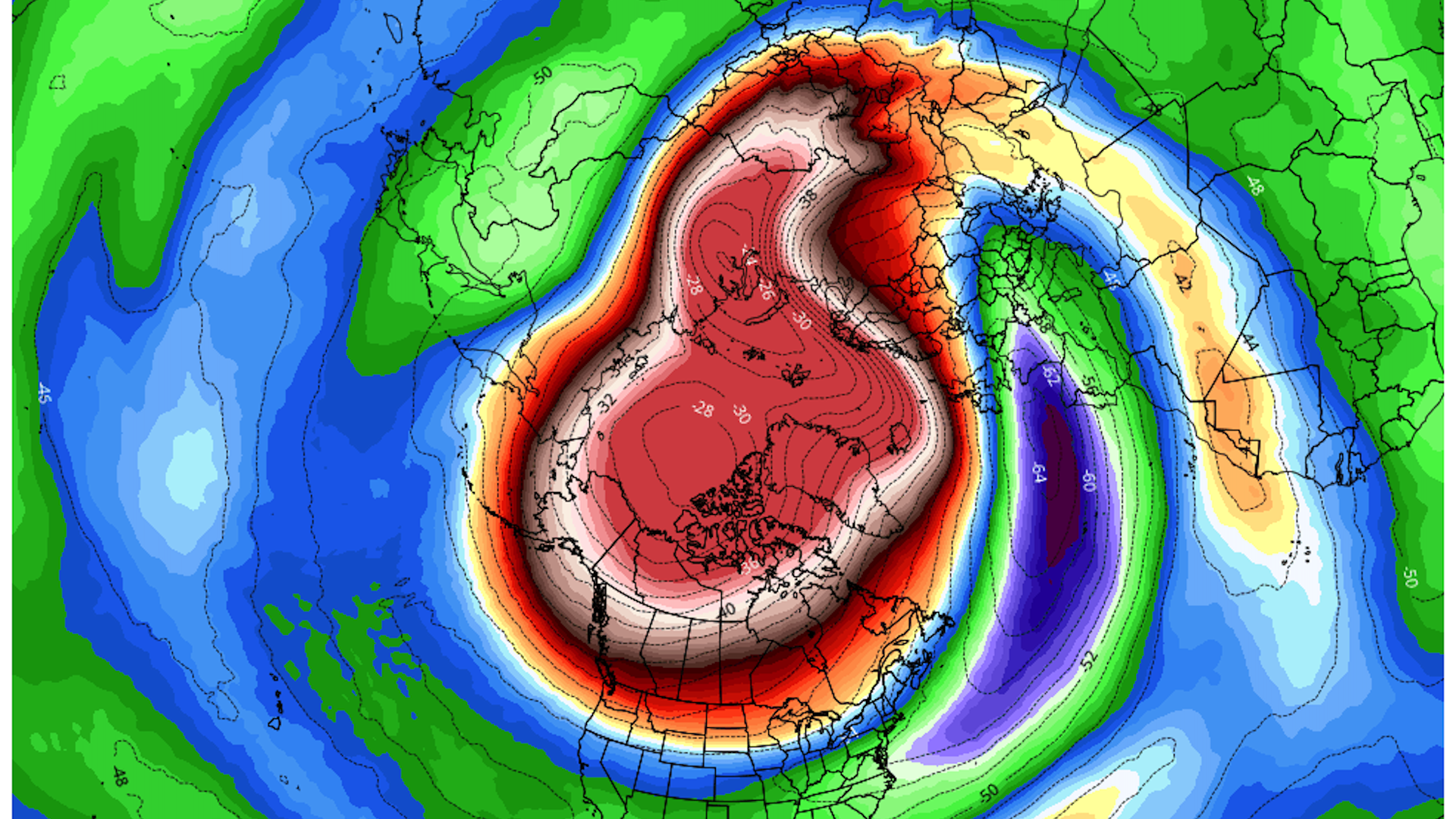Air temperature anomalies in the stratosphere Feb. 17 as simulated by the American GFS ensemble. Graphic: WeatherBell.com
A sophisticated and extremely consequential temperature phenomena is slated to consider location following week, as air temperatures about 100,000 toes earlier mentioned the surface area, skyrocket and swirling winds around the Arctic slow or even reverse way.
Why it issues: Acknowledged as a unexpected stratospheric warming occasion (SSW), this can disrupt the polar vortex and displace frigid air masses into Europe and the japanese U.S.
The significant picture: The primary computer versions forecasters count on to assist predict the climate are in around lockstep arrangement that a unexpected stratospheric warming (SSW) celebration will occur beginning future 7 days. This just one could be primarily powerful, far too.
- “The SSW appears pretty specific at this point,” Amy Butler, a NOAA meteorologist, instructed Axios by using e-mail.
How it is effective: These kinds of gatherings can occur when big atmospheric waves surge outside of the troposphere and into the stratosphere higher than it.
- The vertical transport of strength can swiftly heat the stratosphere and established in motion a disruption of the stratospheric polar vortex, which is a circle of solid winds bordering an region of minimal force above the Pole.
- Above time, sudden stratospheric warming situations are identified to influence the troposphere below, which can have an effect on the climate in the U.S. and Europe — commonly a week to quite a few weeks later on.
- Their outcomes may perhaps persist for extra than a month.
Of be aware: In the latest earlier, unexpected stratospheric warming events have led to key cold snaps in Europe, such as the “Beast from the East” sample that drove frigid air from Siberia westward into the United Kingdom in 2018.
- They have also led to prolific snows in the Northeast U.S., while experts tell Axios that connection is a little bit additional tenuous.
- Even now, these events present some hope to snow lovers in the Mid-Atlantic and Northeast, two areas that have viewed minimal frozen precipitation so far this wintertime.
Zoom in: Judah Cohen, director of seasonal forecasting at AER in Massachusetts, claimed the jury is nevertheless out on specifically how the disruption of the stratospheric warming party will have an impact on the climate in the U.S. and Western Europe in late February into March.
- “How and no matter if this interprets to remarkable weather conditions is even now complicated in my view,” he said by using email.
- Simon Lee, a climate researcher at Columbia College who studies the polar vortex, said much relies upon on the extent and velocity at which the adjustments in the stratosphere, such as a slackened polar vortex, influence the troposphere down below.
- Previously, pc types are signaling the likelihood of air strain designs in excess of Greenland and the North Atlantic shifting into positions that favor cold and snow in Europe and can do the similar for the eastern seaboard from Washington to Boston.
What they’re saying: Butler mentioned the polar vortex disruption is only a person of lots of elements that will affect winter season temperature in the course of the upcoming number of weeks.
- “I consider it is really also vital to acknowledge that the stratosphere is not acting in isolation on the weather conditions but as 1 aspect of lots of other issues heading on which includes the current La Niña.”
- “These elements might either strengthen or cancel out the impacts of the SSW in some locations,” she stated.
The base line: A powerful stratospheric warming celebration is most likely to choose position future 7 days, and there is the likely for high affect shifts in climate patterns to influence Europe and components of the U.S.
- Having said that, there is considerable uncertainty on the certain impacts to appear.
- For illustration, if it will take various months for shifts to come about in the lower atmosphere, Cohen pointed out, the clock on the winter season of 2022-2023 may perhaps immediately operate out.
